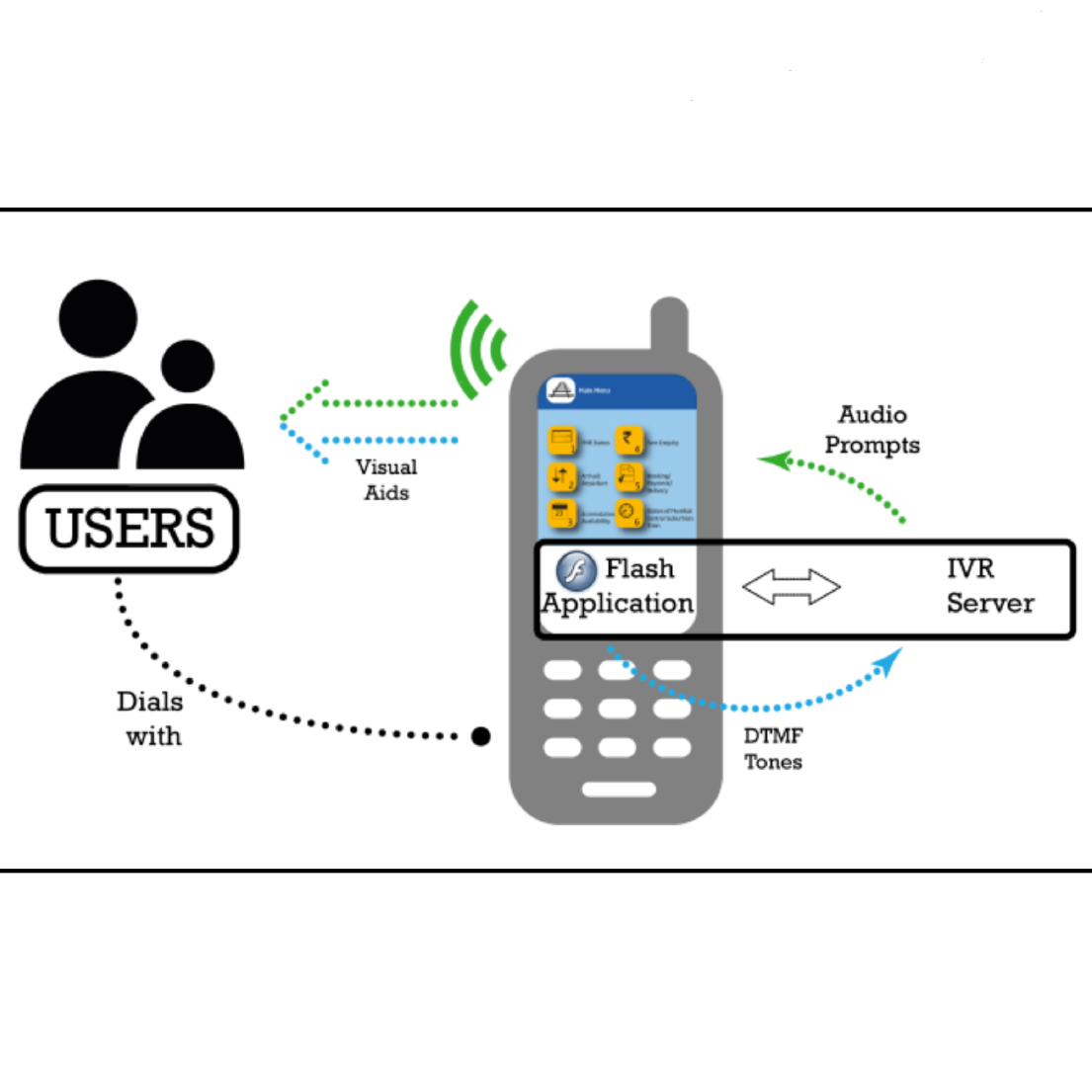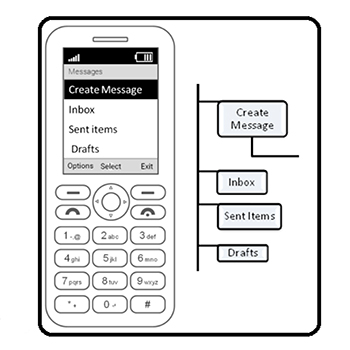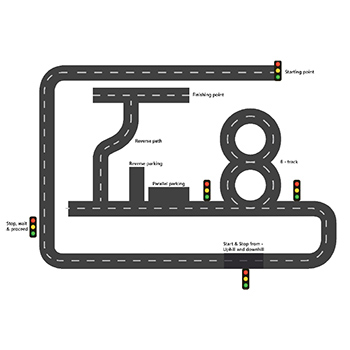Thesis
Batch 2018
(7 items)
ThesisBatch 2018
(7 items)
(7 items)
by Rupa N. Agarwal; supervisor/s: Prof. Ravi Poovaiah
This methodology has guided this study in two ways.
1. To develop the model progressively along the action research stages.
2. To use action research as theory in action by demonstrating that conjectures are the link between the theoretical constructs of design ontology and sustainability epistemology.
The research contributions are
1. Developing a model representation for pedagogy of conjecture and analysis for sustainability (CAMS). It is essentially a model for converting unsustainability consequences into sustainability conjectures. It is proposed that this model should be used as a teaching-learning aid for sustainability.
2. To expand the vocabulary of conjectures by identifying typologies used in the design process. One of the main challenges facing the development of the model is to address not only environmental sustainability issues but also other aspects of sustainability such as social, cultural, lifestyle, and consumption patterns. By doing this, the generalizability of the model increases to a wider range of design problems and it has relevance to different design disciplines.
by Suresh Sethi; supervisor/s: Prof. Ravi Poovaiah
by Abhishek Shrivastava; supervisor/s: Prof. Anirudha Joshi
Because of the massive expansion of mobile in these regions, emerging users in developing countries are rapidly gaining access to Information and Communication Technology (ICTs). However, they still need appropriate interfaces to perform better with interactive products. Many regard that audio interfaces like Interactive Response Systems (IVRs) can be the best-fit interfaces for emergent users on account of easier deployments, and a strong presence of vocal culture in developing regions. In addition, IVRs are known to improve system usability and task completion rates by preventing users from losing track of interface features, functions, and limitations. They insist on using directed dialogue IVRs for novice users. It seems possible that by using IVR-based interfaces with directed dialogue for emergent users, the advantages that exist for first-time users can be transferred to emergent users.
IVRs, however, pose serious usability challenges to their users because of the inherent transience and temporality of audio. Tatchell finds IVR-based services difficult to learn, easy to forget, and confusing. Users must pay attention to the audio prompts presenting menu choices and system control features. This places a significant strain on the user's working memory. Consequently, user interactions with directed dialogue IVRs suffer from "poor referability" and "absence of memory aid." Recent studies with emergent users in focus have reconfirmed these usability difficulties. A lesser-explored approach aimed at addressing usability barriers with IVRs is the use of coordinated visuals along with audio prompts. Our efforts in the current research work are primarily based on this approach.
by Devanuj Kanta Balkrishan; supervisor/s: Prof. Anirudha Joshi
We propose a user-usage model to describe and predict the technological adoption of information and communication technology (ICT) by the users who have been significantly disadvantaged in terms of their capabilities to access, learn, and use ICT artefacts and, at the same time, could benefit from them in terms of an improvement in quality of life. We have termed this class of users as the "Emergent Users" (EU) to signify the hope absent in terms such as "poor," "low-literate," etc.
We define technology adoption as the initiation, learning, and sustenance of usage. It is well appreciated that ICT could benefit the EUs in many ways, such as improving the access to and the efficiency of education, healthcare and governance: and helping in the livelihood activities. However, an ICT intervention may not reach its potential if technology adoption is inadequate. That implies that, if we aim to design ICT artefacts that are meaningful for the EUs, we need to study technology adoption by them.
The user-usage model is a two-dimensional categorical matrix. Depending on user-related factors such as age, gender, prevalence, etc. (the input variables), the "placement" of a user in the user-usage model (the output variables) could be decided. The vertical dimension of the model represents the user types—the archetypal categories of the users based on their usage patterns. There are six user types. Basic users do only the tasks that require one or two presses of hardware buttons. Navigators can navigate the menu hierarchy. Text inputters can type text. Saver can follow, design, and manage the directory structures to save files. Account holders can use account based applications to manage online identities and communicate with other accounts. Transactors can buy things online. The user types are arranged in increasing order of their ability to deal with complexity.
by Poornima Sajive Nair; supervisor/s: Prof. B. K. Chakravarthy
This work seeks to decode the manner in which children from marginalised societies learn. This thesis establishes the mode in which children in primary schools, in particular, internalise misconceptions. It further establishes that experience-based pedagogy is not an effective method to enable learning with understanding among the children of the marginalised section of society (lower economic stratum).
NCERT is framing and proposing to introduce Experiential Activities across the Education Boards as a national initiative. On the directive of NCERT, several schools in the city are replacing existing curriculum with experience-based learning. Previous attempts to set up schools based on experiential learning have not gained impetus, and schools based on the philosophy of experiential learning have opted to change the mode to formal systems. Experience-based pedagogy is based on personal experiences or learning ‘by doing’. Experience based pedagogy has been effective in schools globally and is an established mode of communication for conceptual understanding by educators. It is considered an effective tool for learning with understanding among primary school children.
The underlying methodology is in three parts: (1) an initial correlational study, in which a phenomenon is observed and studied. (2) an intermediate study using phenomenography to establish the occurrence of the phenomenon in other geographic areas of the country; (3) a specific study, which entails studying 20 school children for 18 weeks; and finally, a focused study on 3 students who dropped out of the group of 20 children. The hypothesis is based on two main theoretical concepts. The first concept is based on Kolb’s experiential learning theory. This theory advocates the feedback mechanism and looping between reflection, analysis, and observation. This process goes on until conceptual understanding is achieved.
by Guruprasad Kuppu Rao; supervisor/s: Prof. B. K. Chakravarty & Prof. B. Ravi
A prototype is well established as a "design tool" for its key role in problem solving. Prototypes for industrial applications are well investigated and demonstrated. Prototype-making involves a lot of creativity in addition to the necessary skills and resources. With the advent of three-dimensional (3-D) CAD and 3-D printing, making prototypes has become somewhat effortless. Since the last decade, 3-D printed prototypes have been used for various healthcare applications. From published literature, we can see its applications are growing. Some of its applications include anatomical models for teaching, procedural planning, surgery guides, and implants. The medical image information obtained as DICOM data can be processed to integrate and regenerate the shape of anatomy. This forms the basis of medical 3-D virtual modelling and, subsequently, its fabrication using 3-D printing.
From our literature study, we see work on hard tissues while soft-tissue applications are sparse. This is due to certain challenges they pose in image processing. The current research study focuses on one of the soft tissue-based organs, namely, the heart. The motivation comes from the risks that the organ poses at birth, called Congenital Heart Disease (CHD). They are caused by the malformed heart during embryonic development in the foetus. Because defects occur at random, they manifest in a wide range of forms. Many of these minor defects resolve in early childhood. However, the severe and moderate defects need surgical interventions. Like any treatment, early detection helps plan treatment management. In most cases, neonatal echocardiography is the gold standard for assessing the condition. However, there are a few complexities that are hard to diagnose and plan corrective procedures for. The infant’s heart surgeries are generally risky, and planning such interventions on the operation table can be risky and can lead to the loss of precious time. In such cases, clinicians may study the digital models on a computer. The virtual 3D models can be zoomed in, panned, and rotated to explore. Surgeons are used to spatial visualization, where touch and feel are essential. With just the virtual models on screen, the rich heart morphology cannot be completely visualised. It is here that we see clinicians needing physical models for haptic exploration in true size and shape to plan interventional procedures. These physical models can be called patient-specific heart models. While the literature shows such applications, we observed a few gaps: absence of a standard workflow procedure to identify the nature of cases that demand models, how to accurately produce them, and how to evaluate their accuracy.
by Sajan S; supervisor/s: Prof. Gaur G. Ray
The Indian automobile industry is one of the fastest-growing markets in the world. This steady growth has also meant more challenges for on-road safety, as there has been a steady increase over the last several years.of road accidents and fatalities have been reported over the past several years. Majority of These accidents were found to be caused by human errors or the fault of the driver. Statistics also pointed out a larger representation of young drivers in the reported accidents, who are in theirearly days of licensure. One reason for this overrepresentation of young drivers in accidents Statistics were identified as a gap in traditional driver training and evaluation.approach practised in the country, compounded by adverse behavioural and attitudinal factorsof young drivers. This research focused on human factors and skills associated with driving.to understand accidents caused by human error. The research intends to improve novice drivers.training and evaluation system in the country by emphasising aspects like self-awareness,safety perceptions, self-evaluation, hazard perception, better communication between drivers,and practical use of traffic rules and regulations. The research first explored the nature of Human errors in driving and the effect of conventional driver training and evaluation approaches in creating safety and risk perceptions in novice drivers. It was understood from the According to studies, the conventional system focuses primarily on vehicle handling skills or procedural knowledge.skills necessary for driving, whereas the complex task of driving requires both procedural andcognitive skills. Cognitive skill development, like hazard perception, visual scanning skills,Situation awareness, risk management, decision-making, etc., were found to be absent in thepresent system. The conventional system was also identified as lacking methods to develop skills.necessary for the visual identification of risk factors in a driving situation. These lacunae in the system was found to have an adverse effect on safety and risk perceptions, and riskmanagement skills of novice drivers.






